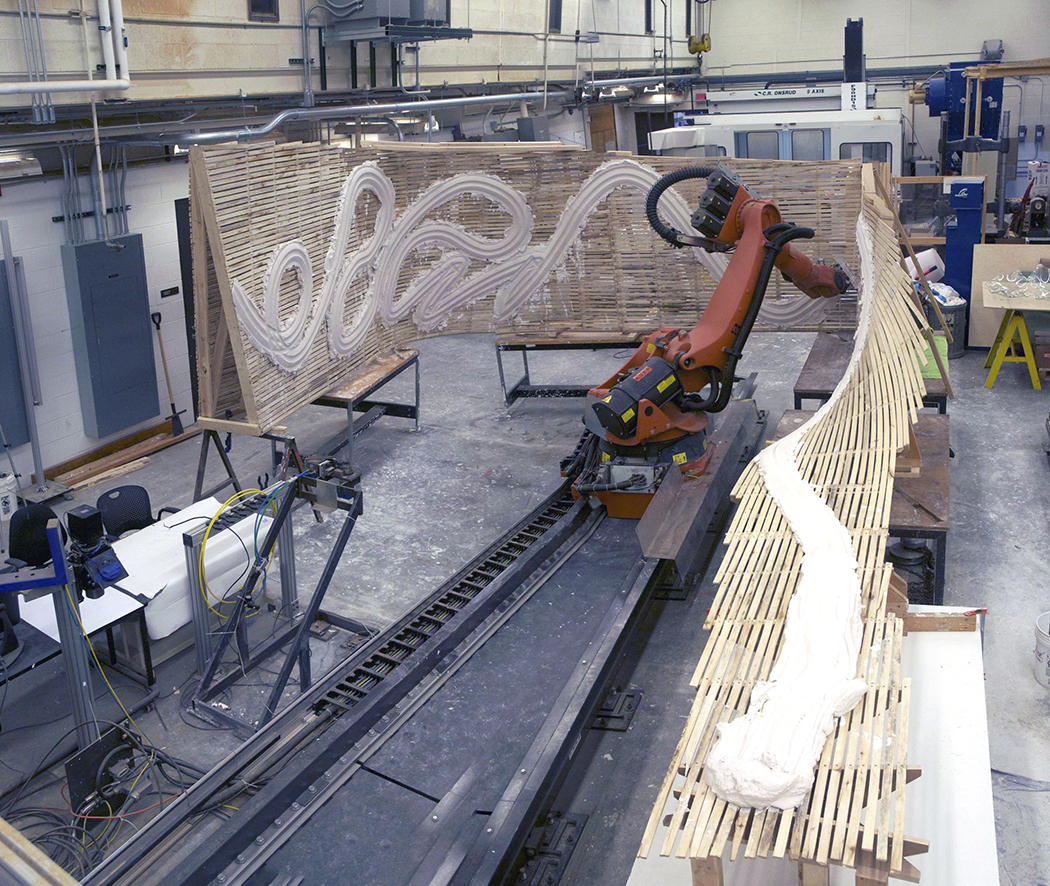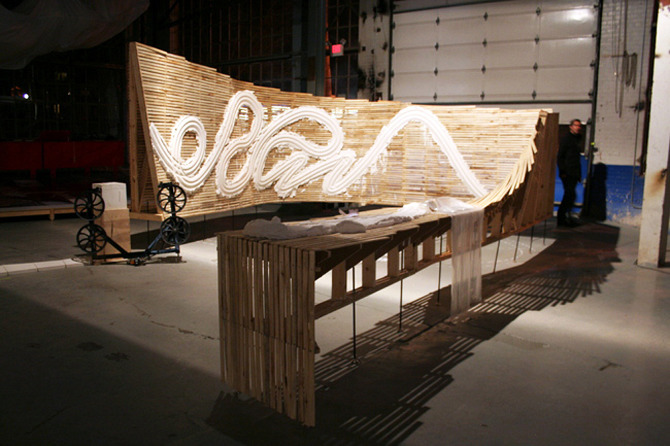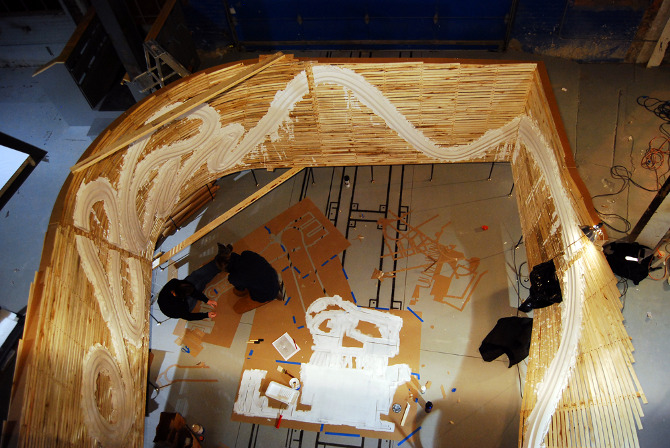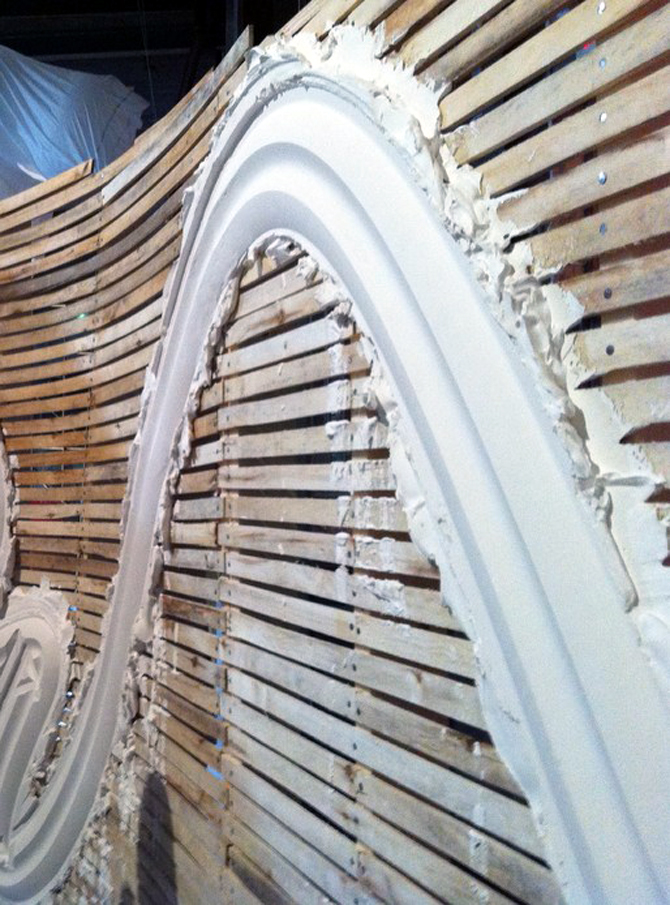



Morphfaux: Recovering plaster as architectural substrate
Research Through Making 2011
Morphfaux revisits the virtually lost craft of plaster to explore its potential for producing thickened architectural environments through the use of contemporary digital technology. The research challenges the flatness of modern, standardized dry wall construction and explores plaster's malleability as a material that can be thick and thin, smooth and textured, and tooled in various states of plasticity. If the invention of industrialized modern building products such as drywall led to the demise of the plasterer as a tradesperson, our research seeks alliances between the abilities of the human hand and those of automation.
By transforming historic methods using new robotic tools, Morphfaux has broadened the possibilities of architectural plaster. While our research has produced forms not possible by human skill alone, it also clearly illustrates a symbiotic relationship between the human body and the digital arm where human dexterity and robotic precision are choreographed in the production of innovative plastering techniques. In a time where organized labor is in the political limelight Morphfaux epitomizes postindustrial, midwestern culture by underscoring the role of human labor in relation to globalized robotic manufacturing.
Additional support has been generously provided by UM Office of the Vice President for Research 2011 Small Projects Grant
Special thanks and acknowledgments to The Carnegie Museum of Art, Hall of Architecture, Pittsburgh
Project Team:
Steven Mankouche, Joshua Bard, and Matthew Schulte with Michael Senkow, Claire Sheridan, Andrew Thompson, Richard Tursky, Robert Yuen, Efrie Friedlander
Consultants
Hofmann Plastering, Saline MI; Edwin Olson, UM Assistant Professor,College of Engineering; Gary Schultz, Spider Technologies
Services
Building custom software to help architects, engineers, and builders is what Robert does full time.